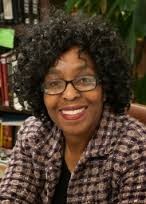
Woke yesterday morning to hear the saddest story, maddening and angry-making, often the way I respond to NPR Weekend Edition Saturday. Not really their fault. The rest of the day sort of fell into place, by which I mean fell apart, the theme of women's exploitation – systematic, organized, no accident – with one story after another on the news and in the paper, and when I finished reading The Contested Murder of Latasha Harlins by UCLA History professor Brenda Stevenson I was affirmed, disappointed, angrier. Go figure. The particular radio story was about the situation of Filipinas who work far away from and never see their own children, hundreds of thousands for whom the sick economic model of Third World near-slavery has led them to the US to work as nannies, maids, domestic helpers, companions and the women who care for my own dad in an old folks' home (a different kind of slavery). Which put me in just the right place for the “gendered” sociological study and history lesson Stevenson tells in her comprehensive guide to one of the most famous, complicated and frustrating crimes in Los Angeles, the murder of a young Black girl by a middle-aged Korean-American woman shop owner in Compton and, yes, the trial and sentencing presided over by a Jewish-American woman judge.
]
Also frustrating, if in a good way, is Stevenson's integrity and commitment to doing what
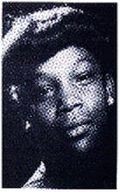
historians do, as opposed to perhaps critics or polemicists (we like them fine, too), which is to offer an avenue, a frame for understanding a perspective or arguing a thesis and then, because the story demands it, turning the corner and introducing another complication, variable, interpretation. I suppose this is where fact meets empathy. To review, as Stevenson wisely does in her Preface: on March 16, 1991, Soon Ja Du shot Latasha Harlins at the Empire Liquor Market in Compton. Harlins died. This was two weeks after the Rodney King beating. The jury found Du guilty. Judge Joyce Karlin sentenced her to time served, paying for the girl's funeral, community service and five years of probation. Remember? But how, exactly?
So, yes, a “contested” murder, not by way of the details (orange juice, fight, handgun) but by way of the experiencing, remembering, the bigger narratives. And the narrative here, at least the most emphasized – along with the stories of politics, class, race and more – is about the somehow both varying, connected, shared
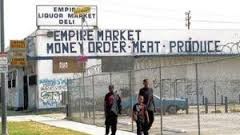
experiences of the main characters as women. Stevenson not only tells the story of African American slavery and its legacy, but of the immigrant Asian and, yes, Korean women's experience. And, because the through-line not only suggests but then seems to manufacture this analysis, she finds ways to challenge her own admittedly challenging interpretation. You won't be surprised by her conclusions, but you will, I think, be impressed, surprised, sickly fascinated by the details, and the demands those details and the author makes on readers.
At some point I heard in the CD player of my mind (not an MP3 player yet) John and Yoko singing their international feminist anthem “Women is the Nigger of the World,” which meant I think that I was as a reader trying to connect to that earlier NPR story, and sort of accepting the exclusivity, perhaps, of an obvious, urgent feminist analysis. Which is correct. But of course there's a reason those two poets chose that particular and particularly demeaning and provocatively racist word. Racism and sexism seem to almost require each other. Same deal with Stevenson's analysis who, by the way, seems not to be particularly
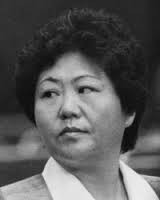
radical. She thanks God (of all people) and acknowledges her own church community, and writes in a voice that is generous, humane, often way too understanding and empathetic for this perhaps too-angry reader. And, naturally, her research and sources and editorial choices suggest an authoritative and accurate reconstruction of events. Those are pretty all-encompassing, even exhausting I have to say, but again that's what you'd expect, even want, with the big reading that she offers here. By which I mean that she takes us way back, through the history of lynching of Black women in the US and the restrictive Asian immigration laws and World War II, in which the judge's successful and famous dad fought. So that it's hard to be angry at everybody once she has humanized them. That said, it's pretty clear that Stevenson finds both the trial and the verdict – how to say this in the same measured tone she does? – unprecedented.
The line in the Lennon/Ono song, by the way, which gets this listener is “Woman is the slave to the slave/Yeah, if you believe me, you better scream.” That's a reference to James Connolly, Irish nationalist, socialist and feminist. Screaming may be appropriate while reading this book. Or at least stopping the merry-go-round of analytical opportunities to settle, unsatisfyingly, for the conclusion that a more just, anti-racist, equal and empathetic society is the answer, to sound both obvious and a little like John and Yoko.

The judge was a wealthy, educated Republican. Tom Bradley was the perhaps disappointing mayor. Danny Bakewell and others both tried to get justice and, yes, reconcile warring factions. How much, finally, do we need to know? Everything, it seems. Stevenson's telling is a puzzle, a maze where just when you come to (forgive me) a judgement, you are foiled, your tentative thesis blown away.
The outstanding elements of this case study stand-in for All That's Wrong with America are the excellent job she does of demystifying the trial, the law, and the political background that put a very inexperienced judge on the bench. Also the painful and necessary reminder of everything happening during and around the trial, including, yes, the Anita Hill-Clarence Thomas deal. Hard to overreach when history serves up any number of complicating and informing side orders of pain and misunderstanding. Sheesh.
Still, there are places where you might stop, as I did, and consider both that larger meaning and the author's skill. The book is divided into two sections covering People v. Du, the trial and the crazy sentencing. In between there are profiles of all three women, with a concluding chapter and epilogue. It's extremely accessible and engaging, even though you know the ending, by which I mean the never-ending, which is bad, bad, bad. On page 137 I stopped to consider this line, in reference to the request, granted, by the first judge assigned to the case, to move the trial out of Compton. “…eliminated Compton as a place where justice could be rendered simply because of the race of the majority of the community's residents.” That might at first read-through seem benign or obvious, but it stuck with me. It struck me as the first really big, huge, nearly out-of-bounds and unimaginable true premise, and although I kept reading, it haunted me. Compton was also the place where lousy convenience stores were owned by and run by conservative, arguably oppressed family members of ambitious Korean immigrants, where a girl whose own mother was murdered could later be claimed for money by her violent, abusive father (one of many predatory men), where gangs shook down shopkeepers and where shopkeepers resented their neighbors and customers, and so on, yes, the elaborately sadistic circumstances of life here about as far away from justice as you could get.
Which is the point of the section of the history of “Jews, Blacks and Asian Americans” section, pointing to the marginality and distance from justice of all three ethnic groups and, by extension – or distention, or tension, or the exploitation hierarchy of our culture – the women of Jewish, Black and Asian American ethnic and political and historical identity. And that is, of course, a whole lot of people. A significant portion of half of the world, city, neighborhood.
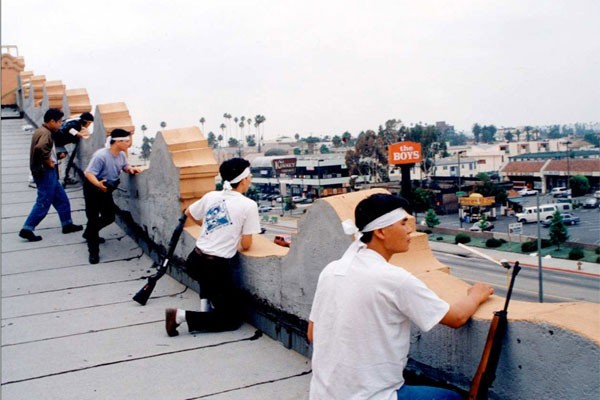
And of course Stevenson's exploration plugs into the riots, and to the murder of Trayvon Martin. It has to. Thus the subtitle: Justice, Gender, and the Origins of the LA Riots, though maybe you don't really notice that part until the end when, elegantly, Stevenson reminds us.

This book is, finally, a gendered social history of all of us, asking us that big question about screaming which so haunted me as I screamed back at the radio yesterday morning, at a property rights culture, a misogynist economic model, a national mission in the Phillipines to deprive women (thanks, Religion; thanks, State) of autonomy over their own bodies, lives, children. Slavery. An urgent question, artfully asked, provoked, insisted upon in this book about three women and the people who seemed to care for them. And who failed.
Check out the eerie cover, stylishly designed by the Oxford University Press people.
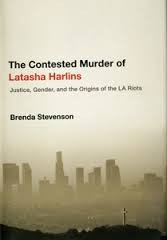
The Contested Murder of Latasha Harlins, Brenda Stevenson, Oxford Univ Press, 411 pgs., $29.95
Andrew Tonkovich hosts the Wednesday night literary arts program Bibliocracy Radio on KPFK 90.7 FM in Southern California.

